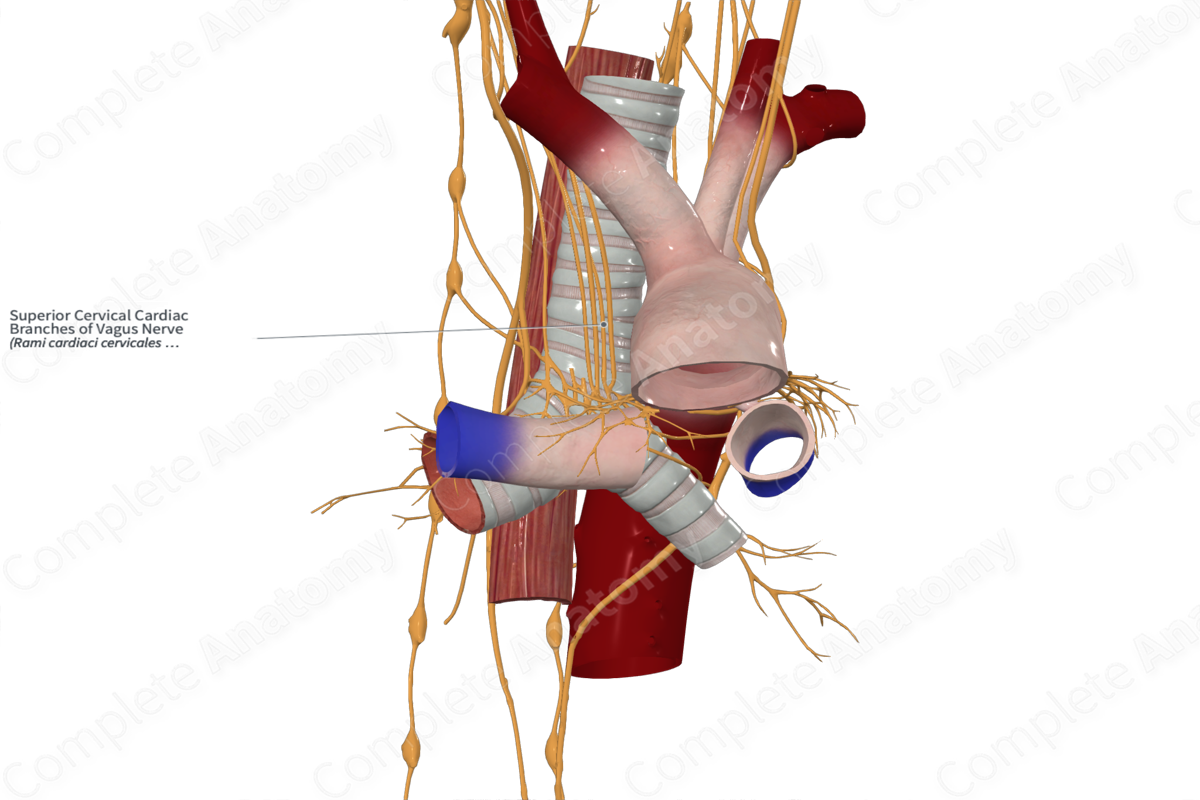
Superior Cervical Cardiac Branches of Vagus Nerve
Rami cardiaci cervicales superiores nervi vagi
Read moreQuick Facts
Origin: Branches from the vagus nerves.
Course: Inferiorly towards the cardiac plexus.
Branches: None.
Supply: Parasympathetic efferent fibers: decrease heart rate and force of myocardial contraction; Parasympathetic afferent fibers: provide the afferent limb of cardiovascular reflexes associated with alterations in blood pressure and blood chemistry.
Related parts of the anatomy
Origin
The superior cervical cardiac branches of the vagus nerve originate from the trunk of the vagus nerve in the neck, below the level of the inferior ganglion of vagus nerve (or nodose ganglion) and superior to the first rib.
Course
The superior cervical cardiac branches of the vagus nerve run inferiorly, lateral to the trachea. The upper right and left superior cervical cardiac branches follow the lateral side of the trachea inferiorly, staying posterior to the aortic arch, to enter the deep cardiac plexus (Netter, 2011; Dorland, 2011).
Branches
The superior cervical cardiac branches of the vagus nerve do not form branches per se. They do contribute along with other cardiac nerves to the formation of the deep cardiac plexus.
Supplied Structures & Function
The superior cervical cardiac branches of the vagus nerve provide parasympathetic innervation to the heart.
Parasympathetic efferent fibers supplying the heart, and when stimulated, decrease heart rate and reduce the force of myocardial contraction. Parasympathetic afferent fibers supplying the heart, when stimulated, provide the afferent limb of cardiovascular reflexes, such reflexes include those associated with alterations in blood pressure and blood chemistry.
References
Dorland, W. A. (2011) Dorland's Illustrated Medical Dictionary. 32nd edn.
Netter, F. H. (2011) Atlas of Human Anatomy. Netter Basic Science Series: Saunders/Elsevier.
Learn more about this topic from other Elsevier products





